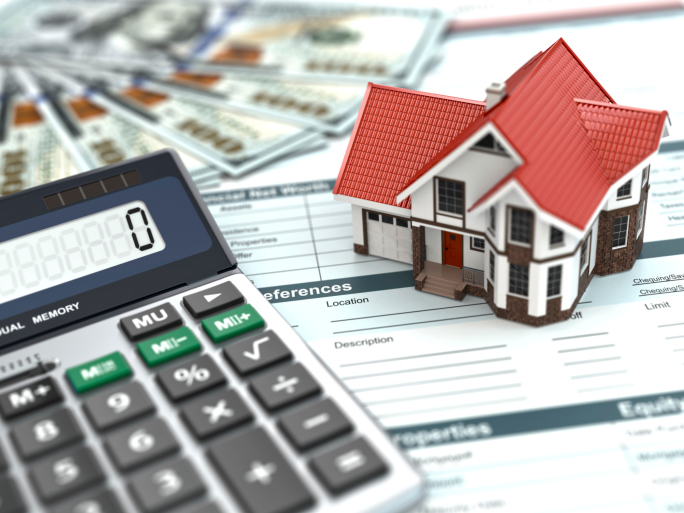An Overview Of Mortgage Points On Home Loans
 Unless someone works in the real estate or mortgage industry, there is a high likelihood that they are going to run into unfamiliar terms. Appraisals, underwriting, and private mortgage insurance are a few of the examples. One of the most common terms that people might run into is termed mortgage points. Even though the term “points” might sound positive, this is not always the case. What do people need to know about mortgage points?
Unless someone works in the real estate or mortgage industry, there is a high likelihood that they are going to run into unfamiliar terms. Appraisals, underwriting, and private mortgage insurance are a few of the examples. One of the most common terms that people might run into is termed mortgage points. Even though the term “points” might sound positive, this is not always the case. What do people need to know about mortgage points?
Mortgage Points Refer To Payments Due At Signing
When someone is negotiating for a home loan, they want to get the lowest interest rate possible. There are several ways that potential homeowners can get the interest rate reduced on their home loan. One option might be to increase the down payment. Another option might be to pay a percentage of the loan amount at signing.
Usually, mortgage points refer to a certain percentage of the loan amount that is due at signing. For example, someone who is being charged one mortgage point will pay 1 percent of the loan amount at signing. Why would someone want to pay a percentage of their loan early?
Mortgage Points Are Usually Paid In Exchange For A Lower Interest Rate
The most common reason why someone might pay mortgage points upfront is that they can bargain for a lower interest rate. For example, someone might be able to pay one mortgage point in exchange for having the interest rate on the rest of the loan dropped by 0.25 percent. Therefore, points go both ways. It is nice that someone can pay mortgage points to have the interest rate lowered on their loan; however, is this the correct decision?
Borrowers Have To Do Some Math
Ultimately, this comes down to a math equation. If a potential homeowner is forking over more money at signing, they are not going to be able to earn interest on that money in their bank account or the stock market. On the other hand, they will save money over the life of the loan because the interest rate will be reduced. Therefore, homeowners have to do some math and compare the interest they are losing by paying money upfront compared to the interest they are saving on the home loan.

 When applying for a new home mortgage, many loan applicants initially consider applying for a 30-year fixed rate mortgage. This is perhaps the most common and traditional type of mortgage available. It allows you to enjoy the opportunity to pay for your home over the course of 30 years with equal payments every month. While this is one option, there are actually multiple choices available. For some applications, a variable rate mortgage may be more advantageous. If you are comparing the options between a fixed rate and a variable rate mortgage, you may consider a few points.
When applying for a new home mortgage, many loan applicants initially consider applying for a 30-year fixed rate mortgage. This is perhaps the most common and traditional type of mortgage available. It allows you to enjoy the opportunity to pay for your home over the course of 30 years with equal payments every month. While this is one option, there are actually multiple choices available. For some applications, a variable rate mortgage may be more advantageous. If you are comparing the options between a fixed rate and a variable rate mortgage, you may consider a few points. When you initially start shopping for a home mortgage, you may be drawn to advertisements for ultra-low interest rates. These may be rates that seem too good to be true, and you may gladly contact the lender or mortgage company to complete your loan application. However, the unfortunate truth is that all too often, mortgage applicants are unpleasantly surprised and even disheartened to learn that they do not qualify for the advertised interest rate. By learning more about the factors that influence your interest rate, you may be able to structure you loan in a more advantageous way.
When you initially start shopping for a home mortgage, you may be drawn to advertisements for ultra-low interest rates. These may be rates that seem too good to be true, and you may gladly contact the lender or mortgage company to complete your loan application. However, the unfortunate truth is that all too often, mortgage applicants are unpleasantly surprised and even disheartened to learn that they do not qualify for the advertised interest rate. By learning more about the factors that influence your interest rate, you may be able to structure you loan in a more advantageous way. Do you have a mortgage? You’ve likely seen or heard a lot about mortgage refinancing as interest rates remained low in recent months.
Do you have a mortgage? You’ve likely seen or heard a lot about mortgage refinancing as interest rates remained low in recent months. Last week’s economic news included readings from Case-Shiller Home Price Indices, along with Commerce Department readings on public and private-sector job growth and the University of Michigan’s Consumer Sentiment Index. Weekly reports on jobless claims and mortgage rates were also released.
Last week’s economic news included readings from Case-Shiller Home Price Indices, along with Commerce Department readings on public and private-sector job growth and the University of Michigan’s Consumer Sentiment Index. Weekly reports on jobless claims and mortgage rates were also released.